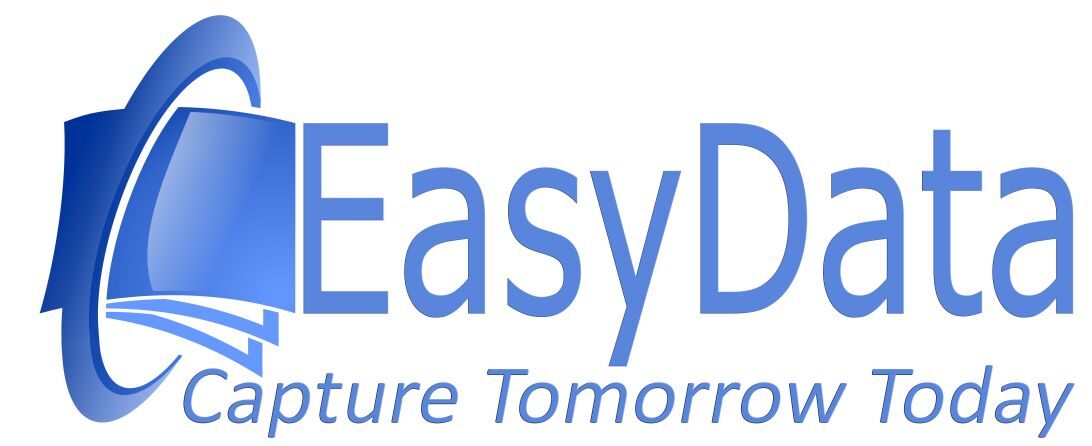AI Document Classification
From chaos to control – AI classifies and you profit
Activate Your Own AI Classification
Why document classification is essential for your business
In the modern business world, organizations are daily overwhelmed by an ever-growing stream of documents. From contracts and invoices to reports and emails. Effectively managing this information has become crucial for operational efficiency. Document classification using Artificial Intelligence (AI) offers a revolutionary solution to this challenging problem.
Document classification is the process by which documents are automatically categorized into predefined classes based on their content. Instead of manually assessing and categorizing each document, AI-based systems can perform this task within seconds with an accuracy that often exceeds human classification.
The process encompasses various components: text classification which focuses on the genre, theme or type of text, and visual classification which is based on visual structural elements in the document.
By utilizing advanced technologies such as Natural Language Processing (NLP), machine learning and computer vision, AI systems can recognize patterns that are difficult for humans to perceive.
Increased Accuracy and Consistency AI algorithms significantly reduce the chance of errors and ensure consistent classification. Automatic classification can be as accurate or even more accurate than manual classification when the right conditions are met.
The impact of manual document processing
For Dutch companies struggling daily with manual document processing, AI solutions offer significant savings. By utilizing advanced technologies such as Natural Language Processing (NLP), machine learning and computer vision, AI systems can recognize patterns that are difficult for humans to perceive.
One of the most impactful applications is intelligent document classification. Where your employees now manually sort and categorize invoices, contracts, quotes and correspondence, AI can do this automatically within seconds – with high accuracy.
Imagine: every incoming email with attachments is automatically scanned, document types are recognized, and the correct workflow is started. Invoices go directly to accounting with all relevant data already extracted, contracts are forwarded to legal affairs with risk analyses, and customer questions are automatically routed to the right department based on content.
This intelligent classification not only eliminates human errors, but also creates complete audit trails and ensures consistent processing according to your own business rules and procedures. These activities take place 24/7, so your employees can find time for the really important matters.
Important Disclaimer
These figures are indicative and based on averages from research. Your actual ROI will vary depending on your specific situation, document volumes, current processes and implementation scenario. The calculation serves as a guideline for your potential business case, not as an advance guarantee.
Research Sources
Figures are based on studies from the sources listed below and internal analysis of increasingly multiple implementations. Average savings depending on company size and sector. That statement can quickly grow into a vague understanding that you as an entrepreneur or decision-maker can do little with. We will solve that with our expertise, EasyData gives you the opportunity to test results yourself.
ROI indication for your own organization
For Dutch medium-sized enterprises struggling daily with manual document processing, AI solutions offer significant savings. The ROI calculation below is based on independent research into Dutch companies and our own case studies with comparable organizations.
ROI calculation for Dutch organizations
Example for 1,000 documents per month
Manual costs*
33.3 hours × €25/h
AI costs*
SaaS license + processing
Net savings*
Monthly profit
Break-even point*
Profitable from
First year ROI*
Return on Investment
Annual impact*
Total cost savings
💶 ROI calculation for Dutch organizations
Example for 1,000 documents per month (based on 2025 data):
- Manual costs: 33.3 hours × €25 = €833 per month
Based on average collective labor agreement wage of €25/hour for administrative functions - AI costs: €300 per month for software
Indicative example including IDP license and processing costs per document - Net savings: €533 per month = €6,396 per year
This example shows a direct return through automation of document processing - Break-even point: Often around 600 documents per month
Payback period is on average possible within 6-8 months
This means an ROI of more than 200% within the first year for most medium-sized organizations*.
Market context 2025:
- Dutch labor market has 395,000 job vacancies, making automation crucial
- 13.5% of EU companies already use AI technologies for business operations
- IDP market grows by 31.7% annually and reaches $3.01 billion in 2025
- Minimum wage rises to €14.40 per hour per July 2025, making manual processing more expensive
Sources (2025):
- CBS – Collective labor agreement wages Q2 2025
- Government – Legal minimum wage July 1, 2025
- CBS – Job vacancies by region 2025
- Eurostat – AI use in EU companies 2024-2025
- OpenPR / TBRC – IDP market report 2025
*The mentioned values are illustrative for this general example. Your own results depend on the type of organization, scope and sector.
Why a PoC for Document Classification first?
The reality of implementation risks in document classification projects
Implementation Risks
- Wrong assumptions about document quality and variation
- Underestimation of complexity specific documents
- Integration challenges with existing systems
- Unrealistic expectations about accuracy
EasyData PoC Approach
- Proof of accuracy - Test with your documents within 4 weeks
- Risk mitigation - Invest when results are proven
- Measurable ROI - Concrete time savings in your workflow
- Integration validation - Proof of compatibility with your systems
A PoC eliminates implementation risks and provides concrete results before you invest in a complete solution.
Prove the value with your own documents - invest only after confirmed results
The technological foundations of AI-driven classification
🔍 Optical Character Recognition (OCR)
OCR technology often forms the basis of document classification systems. This technology converts images of text into machine-readable data by analyzing characters and recognizing patterns. Modern AI-driven OCR can interpret handwritten text, understand document structures and even detect context in multiple languages and formats.
🧠 Natural Language Processing (NLP)
NLP enables computers to understand, interpret and generate human language. For document classification, this means systems can not only read text, but also understand meaning and context. Dutch organizations like TNO combine statistical techniques with machine learning to automatically extract information from extensive and unstructured textual data.
🤖 Machine Learning and Deep Learning
Machine learning algorithms, such as logistic regression, random forest, naive bayes and k-nearest neighbor, form the core of modern classification systems. More advanced deep learning models, including Convolutional Neural Networks (CNNs) and Recurrent Neural Networks (RNNs), can recognize complex patterns in both text and visual elements of documents.
⚡ Transformer-based Models
BERT (Bidirectional Encoder Representations from Transformers) has revolutionized document classification. These models can analyze long texts and understand contextual relationships that traditional methods would miss. Recent research shows that hybrid BERT+ALBERT models can achieve an accuracy of 96.6%.
🎨 Computer Vision and Layout Analysis
Computer vision algorithms analyze the visual structure of documents to recognize layout patterns, tables, forms and different document types. This technology is essential for classification based on document structure, regardless of text content. Layout analysis can classify documents based on visual features such as form fields, table structures and headers.
🔄 Ensemble Learning and Hybrid Models
Ensemble learning combines multiple AI models to achieve superior accuracy. By combining text-based classification with visual analysis and context-aware models, hybrid systems can leverage the strengths of different technologies. This approach results in more robust classification that is less sensitive to variations in document quality and structure.
Challenges and considerations for Dutch organizations
🔒 Compliance and privacy
For Dutch organizations, GDPR requirements are essential. Document classification systems must comply with European regulations and guarantee data sovereignty. More information about GDPR compliance.
📊 Data quality
The quality of input data largely determines the success of AI classification. Invest in data cleaning and normalization before implementing an AI system.
🔗 Vendor lock-in avoidance
Dutch organizations prioritize avoiding vendor lock-in and seek solutions that offer technical architectural flexibility without dependence on a single provider.
👨💼 Change management
Successful implementation requires not only technology, but also employee training and adaptation of work processes. Plan for adequate change management.
💼 Success stories from practice
Discover how Dutch organizations realize up to 90% time savings with intelligent document classification.
View our success storiesReady for intelligent document classification?
Streamline your processes with smart classification!
Dutch DMS Expertise
25+ years of Data experience - Pioneers in document classification since 1999
Dutch data sovereignty - All your data stays within Dutch borders
Technology-wide platform - Works with SharePoint, M-Files, Documentum and other systems
Proven implementation methodology - Striving for operational intelligence*
Transparent pricing - Clear cost structure without hidden costs
Focus on positive ROI - Commitment to cost-effective implementation*
*Implementation timeframe based on average project duration with Dutch clients, individual projects may vary depending on organization size and complexity.
Frequently asked questions about document classification
What is the difference between document classification and document extraction?
Document classification categorizes documents into predefined classes (for example invoice, contract, report), while document extraction retrieves specific data from documents (such as amounts, dates, names). Both processes complement each other in a complete document automation workflow.
How accurate are AI-based classification systems?
Modern AI systems achieve accuracies of 90-96% for document classification, often higher than manual classification. The exact accuracy depends on the quality of training data and the complexity of document types.
Which document formats are supported?
Most modern systems support PDF, Word, Excel, images (JPG, PNG, TIFF), and scanned documents. OCR technology makes it possible to extract text from images and scanned documents for classification.
How long does implementation of a classification system take?
A pilot project can be operational within 2-4 weeks. Full enterprise implementation usually takes 8-12 weeks, depending on complexity and number of document types. Training the AI model can vary from several days to several weeks.
What are the costs of document classification software?
Costs vary from €300-€1000 per month for small to medium volumes. Enterprise solutions can cost €5000+ per month. The break-even point is usually around 600 documents per month, with ROI within 6-12 months.
Is document classification GDPR-compliant?
Yes, if correctly implemented. Choose solutions that process data within EU data centers, offer transparency about data use, and comply with privacy-by-design principles. EasyData offers fully GDPR-compliant document processing solutions.

